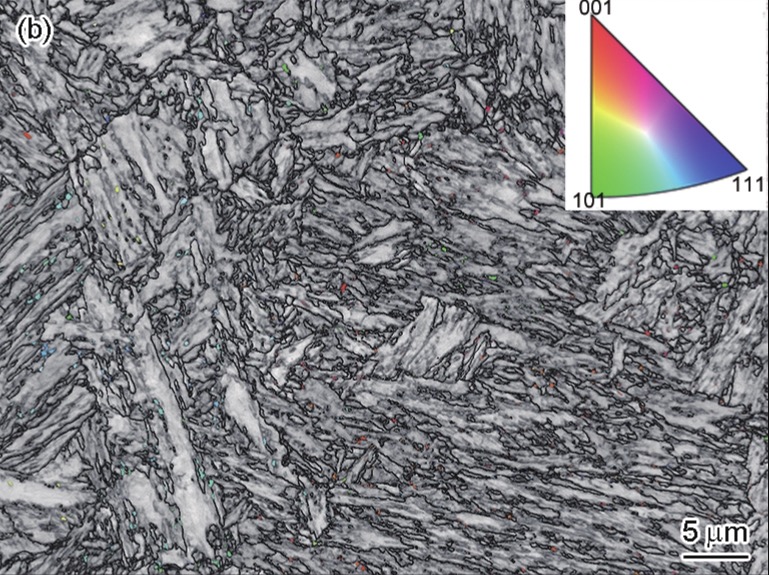Effects of Tempering Temperature on Microstructure and Low-Temperature Toughness of 1000 MPa Grade NiCrMoV Low Carbon Alloyed Steel

The low carbon alloyed steel has been widely used in the shipbuilding and offshore structures owing to its high strength and toughness at low temperatures. To optimize the microstructure and mechanical properties of low carbon alloyed steel as well as investigate the relationship between them, this study focuses on the microstructure evolution and corresponding mechanical properties of a 1000 MPa grade NiCrMoV low carbon alloyed steel during tempering in the range of 450-650oC. Microstructures of lath martensite and autotempered martensite were obtained after hot rolling followed by direct water cooling to room temperature. The evolution of lath martensite and retained austenite on tempering was characterized using SEM and TEM. The distribution of the retained austenite was investigated using EBSD. The result shows that when the tempering temperature of the NiCrMoV low carbon alloyed steel is increased from 450oC to 550oC, the lath martensite recovers and the martensite-austenite component gradually decomposes. The retained austenite with 4.8% volume fraction was obtained after tempering at 600oC. The NiCrMoV low carbon alloyed steel obtained intercritical ferrite and fresh martensite when tempered at 650oC. The reverse transformation process of austenite was analyzed through a dilatometer curve. The partition behavior of alloying elements C, Ni, and Mn during intercritical tempering was analyzed kinetically through DICTRA simulation. An appropriate fraction of thermally stable retained austenite obtained at 600oC was attributed to the extent of partitioning of C, Ni, and Mn into the reversed austenite, which contributed to the best balance of strength-ductility-toughness properties. After direct quenching and tempering at 600oC, high yield strength of 1030 MPa with a high ductility of 18%, low yield to tensile ratio of 0.93, and excellent low-temperature toughness of 160 J at -80oC were obtained.
